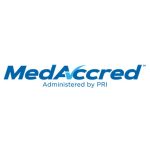In August 2022, revised EU GMP Annex 1 requirements related to the Manufacture of Sterile Medicinal Products were issued, starting the clock for compliance. All but one of the new provisions must be fulfilled by August 2023. The updated requirements, designed to protect and increase confidence in the sterility of these products, are significant and wide-ranging, spanning the Quality system and the manufacturing process itself.
Although some work was already underway on Annex 1 updates a couple of years ago, delays to the publication of the final requirements eroded pharma manufacturers’ sense of urgency, so that up to now resources have not been prioritized to update plants and Quality systems. But now, with clear specifications available and deadlines looming, there is no time to lose in preparing for adherence.
The revised expectations span three key areas, which are set out below along with practical advice on how to fulfil the requirements.
1. Setting out a Contamination Control Strategy
Developing and refining the contamination control strategy (CCS), which must ensure that consistent standards are upheld end to end across manufacturing operations, will require substantial resources both now and on an ongoing basis. Here’s how to break that down:
a) Build a Team
Defining the CCS will require the involvement of a number of different stakeholders, because the scope here transcends any one department. These include knowledgeable individuals from production, engineering, maintenance, quality control, the microbiological department, and quality assurance.
The team must have technical knowledge of the facilities, the equipment (e.g. heating, ventilation and air conditioning [HVAC], and water generation and distribution systems), the manufacturing processes, and the workings of the production department.
Manufacturers should allow a minimum of two to three months to formulate a strong CCS strategy, ideally meeting once a week for around one to two hours. Members of the team should aim to work together as well as individually, as they will need to explain the requirements to other departments to help frame and evaluate the various areas of risk, and define the best control methods and monitoring systems.
b) Document a Formal Contamination Control Policy
Once a multidisciplinary team has been assembled, the next task is to prepare the policy, with input and approval from all stakeholders and the Quality director. This is important, as the CCS will by definition be both wide-ranging and an evolving entity that is honed as data is collected and analyzed over time.
Policy documentation should set out how, when, and how often data will be collected, evaluated, and used. It is advisable to have an overarching policy document, then local versions with associated risk assessments for: each utility and set of equipment; processes and cleaning; and raw materials and their treatment, to identify critical points from a Quality perspective that will need to be measured and monitored.
c) Identify and Manage Relevant Risk
For each of the components above, the team will need perform an individual risk assessment to: identify which areas are critical aspects from a quality point of view; the control measures; and the monitoring systems and data that will provide assurance that everything is working as it should.
These local risk assessments and the data they give rise to over time will feed into the CCS over time, so that it maintains its efficacy and robustness. For this reason, all of this activity must be re-evaluated every year. The central policy document may not change, but local implementations, individual risk assessments, and the global strategy should be re-evaluated annually in line with the emphasis of Annex 1 on continuous risk management (see below).
These evaluations should be conducted by those with most knowledge of the given system. In checks for water purity, the engineering department, quality control and the microbiological department will need to be involved, for instance, together with Quality Assurance.
There should be established practices—defined in the CCS—around which documents must be updated, usually by someone in a QA role.
2. Harnessing Appropriate Cleanroom Technology
Facilities-wise, the revisions to EU GMP Annex 1 require more proactive measures to remove direct human involvement in critical areas such as cleanrooms through the use of restricted access barrier systems (RABS), isolators and robotic systems. Investments here will help reduce the burden of CCS and Quality risk management, too, building confidence through the minimized scope for contamination.
a) Considerations for Existing Plants
In existing plants built some years ago, traditional cleanrooms are commonly still in use. These may need to be updated to the latest facilities features, such as restricted access barrier systems (RABS), which must be in put in place anyway in a new facility or for a new production line.
Supporting such decisions will be the CCS and the ongoing risk assessments that feed into the CCS. Without strong controls and measures—and the ability to demonstrate that there is no risk of contamination to the product either from the environment or associated working practices—it will be difficult for manufacturers to justify continued use of traditional cleanrooms.
One measure that will be important here is having QA people on the shop floor to keep checks on working practices. Again, documenting all of this is crucial; without a formal record, manufacturers will be unable to demonstrate their rigor.
b) Requirements for New Plants/Production Lines
In the case of a new manufacturing plant, or a new production line within an existing plant, Annex 1 requires that companies apply the latest cleanroom technology and that human intervention is removed wherever possible.
Engineering and maintenance people, working closely with QA, will need to be involved in the design of the new equipment, in collaboration with production representatives who can transfer knowledge of the manufacturing process. A key task here will be to identify any gaps in provision (against Annex 1 specifications) that could undermine the new contamination controls and incur new risk.
3. Continuous Quality Improvements
While Quality risk management is not a new expectation for drug companies, there is heightened emphasis now on consistency across all plants and processes, and the importance of periodical reviews to ensure ongoing vigilance and enable continuous improvement.
One of the standout requirements under the new Annex 1, is quality improvement over time—ultimately across the lifecycle of the product. This suggests a cycle of re-evaluation and updating of local policies and overall strategy to ensure that measures are effective, remain relevant, and can be demonstrated as being so.
a) Applying Quality Risk Management on an Ongoing Basis
Depending on the results of periodic re-evaluation—if something changes or there are variations in readings for instance—the relevant risk assessment will need to be updated. This is to verify whether the change has introduced new risks, or whether new control measures or monitoring systems are indicated or must be accounted for, linked to be the component being evaluated.
b) Using Risk Assessment Tools
Annex 1 also requires the use of formal risk assessment tools to justify and evaluate a given activity. If an environmental monitoring program is being defined, usually production people would evaluate the relevant room to establish key points for sample analysis from a microbiological point of view.
Risk assessment tools can help teams identify the critical points of the room where there is high risk of contamination, and determine when and how often samples should be taken, while providing appropriate justification for these decisions.
Moving Forward
While there is an extra year’s allowance to comply with Annex 1 Point 8.123 (around the frequency of sterilization of lyophilizers/pharma laboratory freeze dryers, and the transfer of the product and its loading/unloading to and from these facilities), for everything else provisions need to be in place and tested by August 2023.
With the months counting down quickly now, it’s important that manufacturers have clarity over the scale of the task ahead of them and a plan for the improvements they now need to make. The overall CCS strategy will be the most time-consuming aspect to get right, with so many contributing elements.
To start, companies will need a general overview of the plant and various facilities for all the products that they produce, as well as a clear idea of the aims and focus of the CCS. Without this focus, manufacturers could invest a lot of resource without confidently covering themselves for critical contamination risks.







